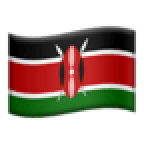For leaders with demanding schedules, navigating Kenya's urban centres is a daily challenge.
It is a familiar sight on Kenya’s congested urban roads: the flash of headlights, the insistent blare of a horn, and the sudden, reluctant parting of vehicles.
A vehicle speeds down the wrong side of the road directly into the path of oncoming traffic, often with blaring signs and GK number plates.
While often justified as a time-saving measure for officials on urgent duties, the practice frequently achieves the opposite, creating new choke points and turning predictable traffic flow into chaos.
This gamble also often ends in tragedy, with collisions and knockdowns resulting in erosion of public trust.
The reality is that such dangerous manoeuvres are entirely avoidable.
Here are four strategies for mastering travel without having to resort to ummm, overlapping.
1. Plan ahead
Effective time management begins before a journey.
&format=jpeg)
Plan ahead
A poorly planned day, with appointments scattered across a city, results in costly and inefficient travel.
This drain on time and fuel can be reduced by scheduling meetings with traffic flow in mind.
Grouping engagements geographically also minimises unnecessary travel and its associated costs.
Furthermore, for non-essential engagements, utilising virtual meeting technology is a zero-travel, maximum-efficiency alternative that saves public resources.
A logistically sound itinerary is the foundation of a punctual day.
2. Depart early
The simplest, zero-cost investment for any schedule is to leave early.
For any event, allocating an extra 30 to 60 minutes for travel creates a crucial buffer against delays.
&format=jpeg)
Leave early
This proactive approach contrasts sharply with the reactive chaos of forcing a path through traffic.
This adjustment is the most direct method to guarantee punctuality, transforming a stressful, intensive rush into a predictable journey, and allowing for clearer decision-making.
3. Mhesh, fungua Google Maps
Applications like Google Maps and Waze provide real-time traffic data, suggesting the fastest routes based on current road conditions.
&format=jpeg)
Use modern navigation tools to bypass heavy traffic
These freely available tools help maximise journey efficiency at no expense.
They also provide an Estimated Time of Arrival (ETA), valuable data that enables one to anticipate departure time too.
4. Explore alternative routes
Relying solely on one route is often inefficient.
&format=jpeg)
Significant time can be saved by becoming familiar with a city's network of roads
Significant time can be saved by becoming familiar with a city's network of bypasses and alternative link roads.
Navigation tools can help discover these routes, allowing motorists to bypass choke points smoothly rather than forcing a path through them.
Using this approach also helps to distribute traffic flow, easing the burden on the city’s main arterial roads as a matter of civic contribution.
5. Text them 'niko kwa njia nakam'
Even with meticulous planning, unforeseen delays can occur.
In these instances, the appropriate response is not to disregard traffic laws but to communicate professionally and clearly.
&format=jpeg)
Updating your host on a delay will leave a lasting mark
A simple call or message to the receiving party, updating them on the delay and the revised ETA, will in fact leave a lasting mark on your hosts.
Implementing these planning strategies ensures timely arrivals without contributing to traffic chaos or compromising road safety.
Punctuality achieved through planning demonstrates respect for public time, public resources, and the citizens leaders serve.


&format=jpeg)
)
&format=jpeg)
![Protective hairstyles for cold season [Image Credit: Popsugar]](https://image.api.sportal365.com/process/smp-images-production/pulselive.co.ke/03072025/aa21f24b-1e85-44ff-a8cb-843e5ad0a7d3.png?operations=autocrop(140:79)&format=jpeg)
&format=jpeg)